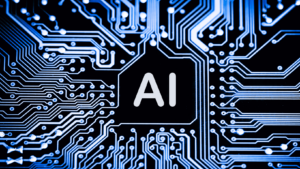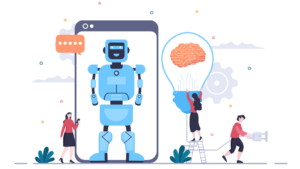In the digital era, two terms have emerged as game-changers: data science and artificial intelligence. These powerful technological tools are reshaping industries, from healthcare to finance, creating a paradigm shift in how we interpret and leverage data. Data science, the art of extracting meaningful insights from raw data, is the backbone of this revolution. It’s the driving force behind the myriad of business decisions we see today. On the other hand, artificial intelligence, with its ability to mimic human intelligence, is pushing the boundaries of what machines can do.
Data Science and Artificial Intelligence
Data science, at its core, backs up decisions with raw data, ensuring credibility by eliminating assumptions and guesswork. It employs techniques like statistical analysis and predictive modeling, drawing insights from structured, semi-structured, or unstructured data. Take the e-commerce industry, for instance. It employs data science in predicting shopper behavior, effectively tweaking their marketing strategies.
Meanwhile, artificial intelligence (AI) manifests the ability of machines to imitate human intelligence. Built on complex algorithms and neural networks, AI navigates through mazes of data to learn, reason, perceive, infer, communicate, and make decisions. For example, healthcare providers examine patient care and disease diagnosis using AI for precise and timely interventions.
Historical Development of Data Science and AI

The evolution of Data Science and Artificial Intelligence (AI) began in the 1960s. It’s noteworthy that Data Science emerged as a standalone field in the 1960s, corresponding to the development of computers. In fact, the milestone is John W. Tukey’s book, titled “The Future of Data Analysis,” published in 1962.
Following this, AI experienced its first wave of hype during the mid-20th century, underpinned by the Dartmouth Conference in 1956 where the term “artificial intelligence” was codified by John McCarthy and other computer scientists.
Post-1980 was the golden age of AI with advancements in machine learning catalyzed by the advent of the internet in 1990. This unlocked massive troves of data, directly fueling the growth of both these realms.
The Intersection of Data Science and Artificial Intelligence

Essential insights, gathered from data, decisively fuel the progress of artificial intelligence. Data science acts as the driving force, transforming raw data into meaningful patterns. Precise examples abound in autonomous vehicle functioning, where Data Science cleans, processes, and interprets data such as road signs and traffic conditions. The results—in the form of clean, analyzed data—provide assistance to Artificial Intelligence algorithms in vehicular function and navigation decisions.
Artificial Intelligence leverages this data, mimicking human intelligence to enhance machine performance. They’re apparent in instances where machines learn through algorithms, adapt to improvements, and execute tasks mimicking human intelligence. An instance includes Natural Language Processing (NLP), an AI subset, where machines understand, interpret, and generate human language, largely supported by data science’s insights.
Fundamentally, the fusion of both spheres, data science and artificial intelligence, allows for an increasingly sophisticated treatment of data and broadens the scope for intelligent, automated solutions. Such intersections, seen in systems like Recommendation Engines, amalgamate data patterns and learning algorithms to deliver personalized suggestions, mirroring a future where data-driven decisions and smart automation proliferate in a digital age.
Key Technologies and Tools in Data Science and AI

Data science and artificial intelligence have emerged as game-changers in the digital age. They’re not just buzzwords, but transformative technologies that are redefining the way industries operate. Data science, with its ability to extract valuable insights from data, fuels business decisions. On the other hand, artificial intelligence mimics human intelligence, enhancing machine capabilities. Together, they’re shaping a future where data-driven decisions and intelligent automation are the norms.
The historical journey of these two fields, from their inception in the 1960s to their integration in the 21st century, is a testament to their growing significance. Data science and AI are now integral to numerous sectors, offering intelligent analysis and automation. Their fusion has led to sophisticated data treatment and broadened the scope for intelligent, automated solutions.
From autonomous vehicles to recommendation engines, the applications of data science and AI are far-reaching. They’re paving the way for a future where data is not just a byproduct, but a valuable asset that drives innovation and growth. As we move forward, it’s clear that the union of data science and artificial intelligence will continue to be a major force in the digital era.



